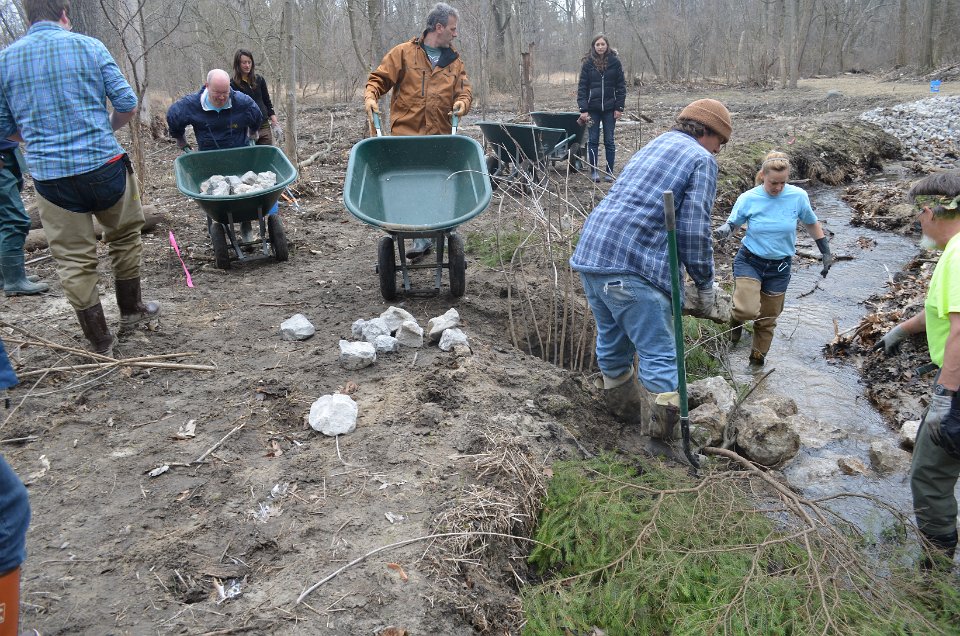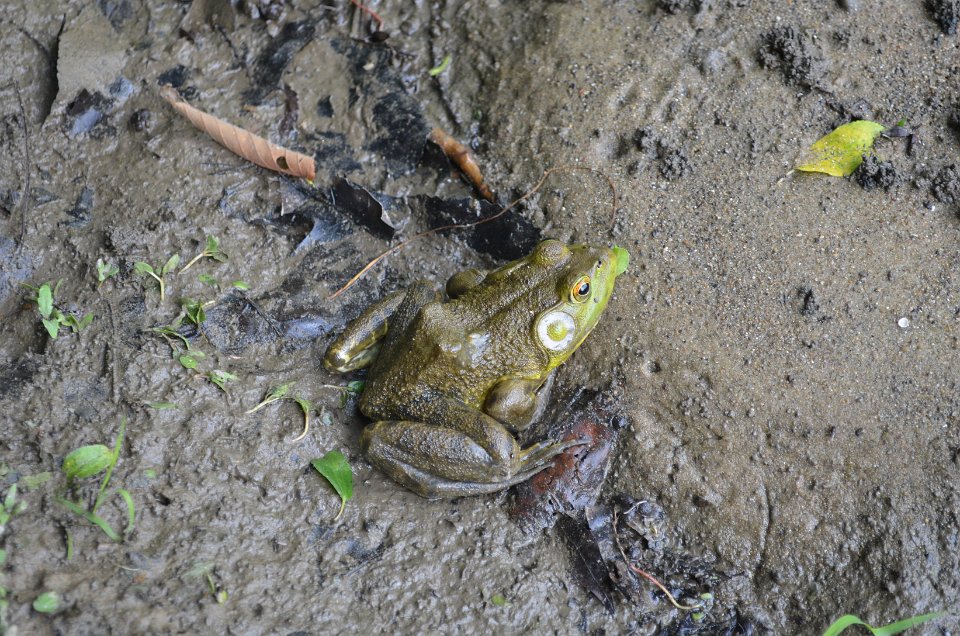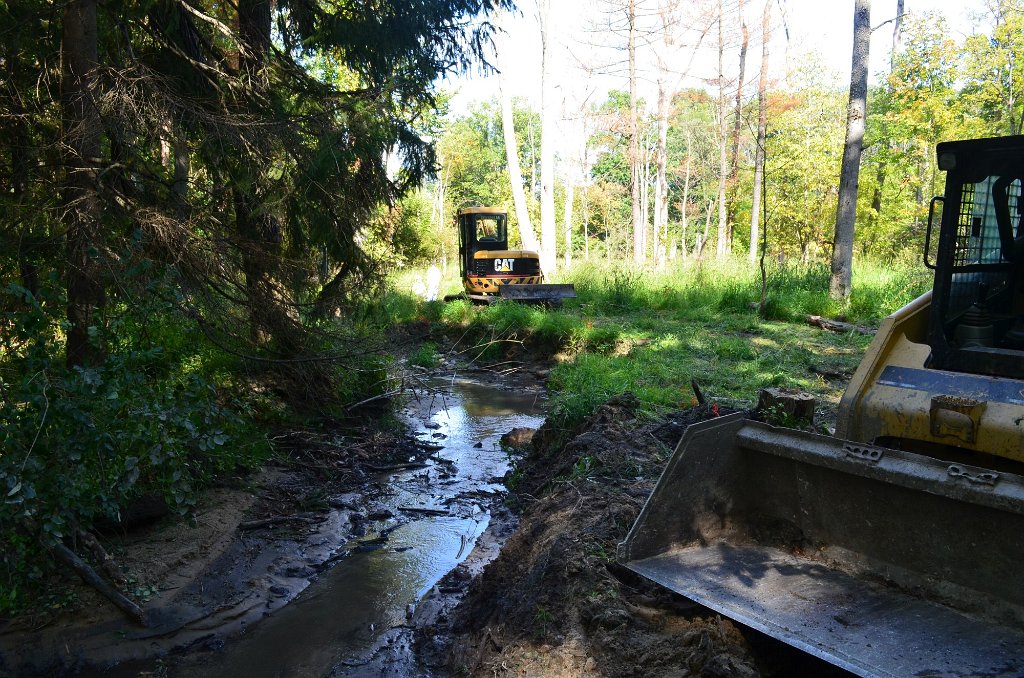Project Overview
In 2010, Partners for Clean Streams (PCS) was awarded a $1.36 million Great Lakes Restoration Initiative (GLRI) grant to restore stream habitat, reduce erosion, enhance wetlands, and to improve upland habitat along the upper Ottawa River.
After years of planning and preparation, including surveying, modeling and design in cooperation with the Army Corps of Engineers, construction began in fall of 2012. PCS and the Boy Scouts of America were thrilled with the way the project progressed over the two months of construction and the natural response to the features installed. GeoGradel Co. and Ecological Restoration, our contractors, were creative and flexible while working in an active Boy Scout Camp.
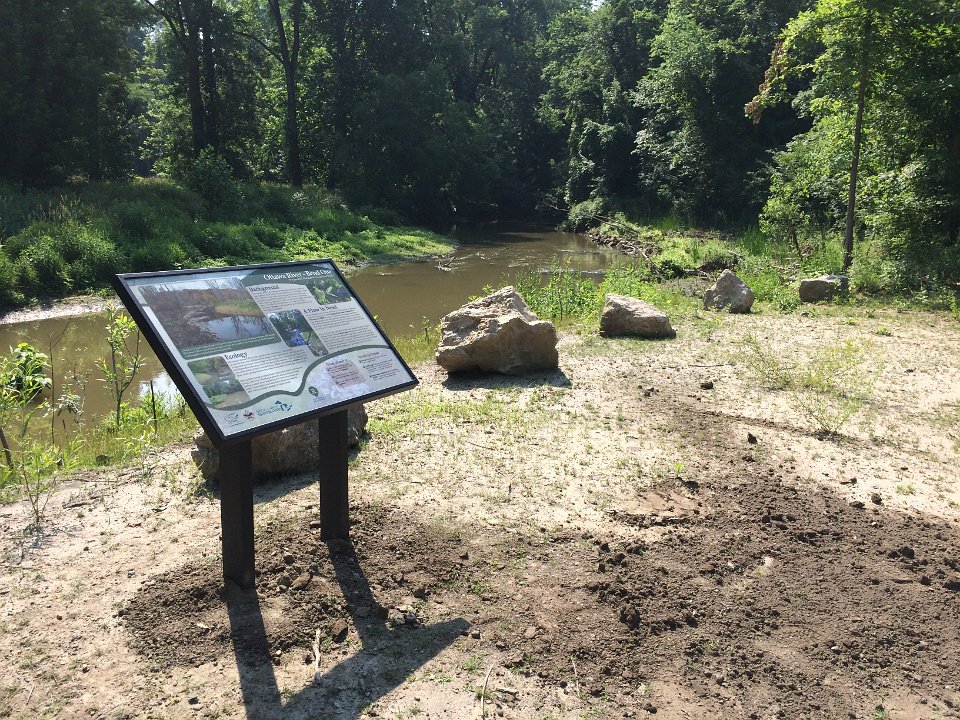
Project Benefits
Once major habitat improvements were completed, PCS continued to engage the Boy Scouts with activities like macro-invertebrate testing and water quality workshops. Educational signage on-site continues to share the story of this project and its benefits to the thousands of Scouts and their families who visit this camp annually.
PCS expects that long-term outcomes will bring the Maumee Area
of Concern (AOC) closer to removing the Loss of Fish and Wildlife Habitat Beneficial Use Impairment (BUI) (BUI #14), and to a lesser extent improve the Degradation of Benthos (BUI #6), and Degradation of Fish and Wildlife Populations (BUI #3) in the Ottawa River watershed. Learn more about BUIs on the Maumee AOC site.
Restoration Work Details
Nearly 10,000 cubic yards of sediment was slated to be taken off-site once excavated from Lake Sawyer. However, with a little creativity, much of it was able to be used on-site to shape banks, create new wetland shelves, and contour the bottom of the Lake. Sloping back the excavated areas in Lake Sawyer helped to prevent future erosion, as well as provide a gradual transition between deeper and shallow areas, perfect for aquatic habitat and recreational activities.
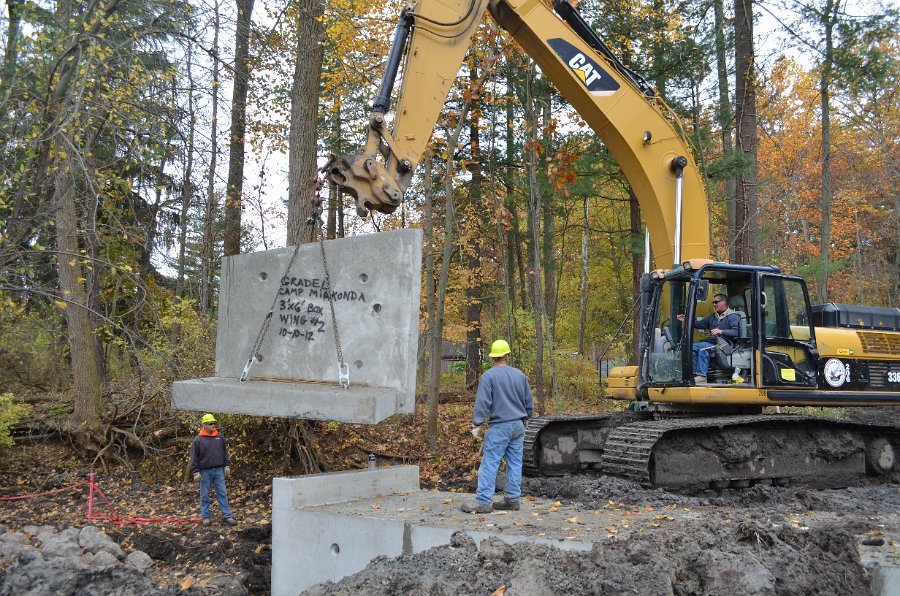
Wetland Improvements
Along the edges of Lake Sawyer are several built-up sections that were designed to be wetland shelves. These shelves allow water to filter from the tributaries through the wetland shelves to the Lake. The wetlands help to settle out sediment and potential pollutants before the water reaches the deeper portions of the Lake. These wetland shelves will remain underwater, yet are shallow enough to become a unique educational opportunity for Boy Scouts and the public to learn about wetland plants and their benefits.
Existing wetlands north of the Lake, and pocketed throughout the project area, were also improved. Nearly 5 acres of wetlands were restored and enhanced by both invasive species treatment/removal and the planting of over 26,000 new, beneficial native plants.
Tributary Improvements
Flowing into Lake Sawyer are two tributaries, Cunningham and Hartman Ditches. Cunningham Ditch entered the Lake through a pipe under an old BB range and camp road. The pipe was removed and riffle/pool structures were created to reduce erosion and encourage fish and aquatic insects. Hartman was redirected into the Lake, using the installation of an open bottom culvert to protect aquatic life.
Having two tributaries flowing into the Lake provides more water movement through the Lake and helps to provide oxygen to the deepened waters, benefiting wildlife. Both tributaries received stone work to help direct the water and lock-in new native plants added for sediment control.
Erosion Control
The steep banks of the Ottawa River also received some much needed attention. Within the river, numerous in-stream structures, such as Bendway Weirs, were installed to push the highest velocity current of the river into the center of its existing channel. This reduced the stress on the river bank and the subsequent erosion. Near the river and the Lake’s closest point, a longitudinal peaked stone toe protection (LPSTP) was built along more than 650 feet of the banks to help prevent erosion from occurring at high-flow events. This erosion was degrading water quality, destroying streamside vegetation, and threatening to breach the Lake.

